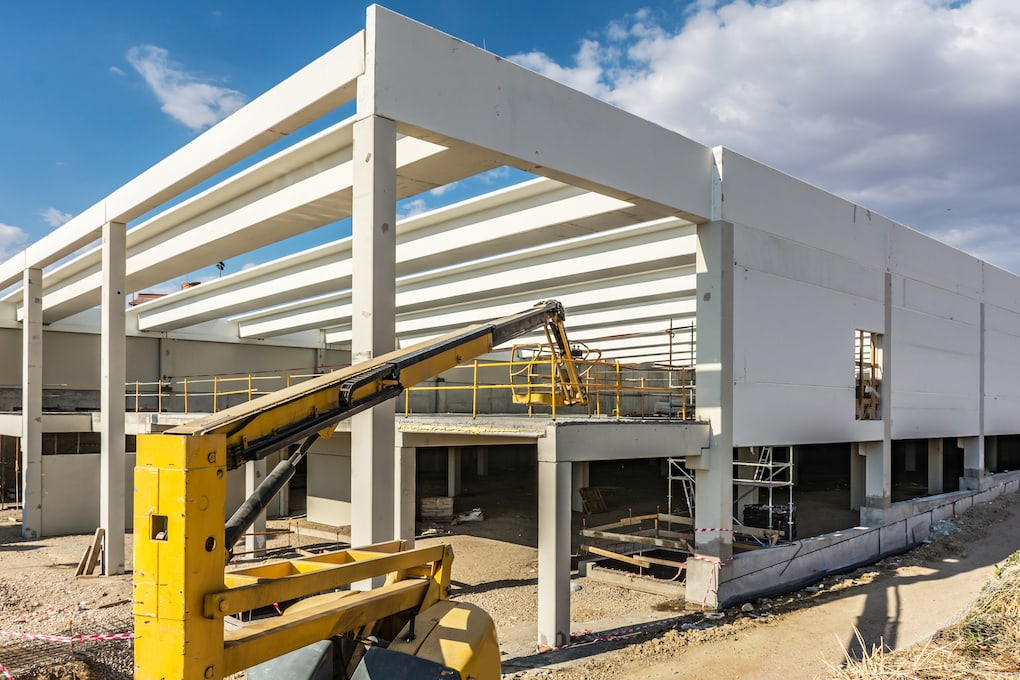How To Estimate The Cost Of Construction For A Commercial Building?
Construction cost estimation is the process of calculating the total cost required for building a commercial project. To estimate the cost of commercial building construction, it is essential to consider various factors, including location, building type, size, complexity, materials, labor costs, and local regulations. One of the standard methods for estimating construction costs is to calculate the cost per square foot and multiply it by the total area of the building.
To estimate the cost of commemorative building construction in NYC, you need to be very careful and vigilant. This is because you need to consider factors such as location, building type, building size, materials required, and labor costs. The per-square-foot rate might be influenced by the factors mentioned above. Therefore, accurate estimation is very critical for the success of a commercial project. This is where this blog post will be of the most significant help to you. This comprehensive guide will discuss the process to estimate the cost of construction for a commercial building in NYC.
Additionally, we will also highlight the premium construction takeoff services in NYC, which will help clients seeking precise estimation services. For example, if you are seeking professional advice for commercial construction cost estimation in NYC, then My Virtual Estimators can help. Let’s begin:
Estimating the Cost of Construction for a Commercial Building:
Commercial building construction is generally more costly than residential construction due to its larger scale, more complex designs, specialized materials, and stricter code compliance requirements. Whereas residential projects often have lower costs due to their smaller scale, with simpler designs and less stringent code compliance. Let’s explore the process to estimate the construction cost of a commercial building.
- Define Project Scope and Gather Data:
When estimating the construction cost for a commercial building, the first step is to clearly define the project scope and gather the necessary data. To understand the project scope, it is essential to comprehend the requirements and specifications. This can be done by exploring the project drawings and visiting the site. Assess the topography, soil conditions, and any site-specific challenges, and record them. You can also utilize the past project data’s cost and performance to make more informed estimates. Analyze the market, shop around, and look for the best material and labor available in your location. Lastly, consider the factors associated with local building codes and permits, as they will help clarify the project scope.
- Determine Building Type and Class:
Once you have reviewed the project scope, the second important factor in estimating construction cost precisely is understanding the type of building. NYC has different building types and classes, so it’s always beneficial to understand the building types and their classes when estimating construction costs. For example, the Class A building includes premium and high-end buildings with top-of-the-line materials. So if you are considering estimating the Class A buildings, then you need to consider the higher costs of the materials.
The type of building (e.g., office, retail) has a significant impact on costs. Below are some of the building types, along with their corresponding classes, to help you estimate the construction cost of a commercial building effectively.
| Building Classification for the City of New York | |
| Class | Description |
| A | One-Family Dwellings (e.g., houses, mansions, cottages) |
| B | Two-Family Dwellings (e.g., duplexes, converted homes) |
| C | Walk-Up Apartments (3+ families, no elevator) |
| D | Elevator Apartments (high-rises, co-ops, luxury apartments) |
| E | Warehouses (storage, self-storage, industrial storage) |
| F | Factories & Industrial Buildings (manufacturing, light/heavy industrial) |
| G | Garages & Auto-Related (parking, gas stations, repair shops) |
| H | Hotels & Lodging (luxury hotels, motels, hostels, SROs) |
| I | Hospitals & Health Facilities (clinics, nursing homes, adult care) |
| J | Theatres & Performance Venues (movie theaters, TV studios, concert halls) |
| K | Retail & Store Buildings (shopping centers, department stores, banks) |
| L | Lofts (industrial conversions, artist spaces, storage lofts) |
| M | Religious Facilities (churches, synagogues, convents) |
| N | Asylums & Group Homes (orphanages, detention homes, shelters) |
| O | Office Buildings (low-rise, high-rise, mixed-use offices) |
| P | Indoor Public & Cultural Facilities (museums, libraries, YMCA) |
| Q | Outdoor Recreational Facilities (parks, stadiums, golf courses) |
| R | Condominiums (residential, commercial, mixed-use condo units) |
| S | Mixed-Use Residential (homes with stores/offices) |
| T | Transportation Facilities (airports, piers, tunnels) |
| U | Utility & Infrastructure (power plants, railroads, bridges) |
| V | Vacant Land (zoned residential, commercial, government-owned) |
| W | Educational Facilities (schools, colleges, universities) |
| Y | Government & Municipal Buildings (police, fire, prisons, sanitation) |
| Z | Miscellaneous (cemeteries, post offices, UN buildings, easements) |
- Key Takeaways:
Whether you are a construction manager or estimator, understanding of these classes will enable you to estimate more efficiently. Below are the key takeaways from the building classes available in NYC.
- Residential (A, B, C, D, R, S)—Covers single-family homes, apartments, and condos.
- Commercial (K, O, L, J, H)—Includes retail, offices, hotels, and theaters.
- Industrial (E, F, W)—Warehouses, factories, lofts.
- Institutional (I, M, W, Y, P, Q)—hospitals, schools, government, parks.
- Special Use (T, U, V, Z)—Infrastructure, vacant land, unique properties.
This classification is beneficial for real estate, zoning, tax assessment, and urban planning purposes. So, if you are estimating the cost for a commercial building, then classes K, O, L, J, and H are the classes you should understand.
- Estimate Material and Labor Costs:
Once you have understood the project scope and are familiar with the various building types and classifications, you need to calculate the materials and labor costs for a commercial project. Calculate the quantities of all materials, including concrete, steel, lumber, and other necessary components. You can also shop around or consult with different vendors or contractors to make informed choices about materials. For a labor estimate, the number of skilled workers required, such as carpenters, electricians, plumbers, etc. Lastly, include local labor costs and any relevant union agreements.
- Estimate Equipment Costs:
Equipment cost is the last factor to consider when estimating the construction cost of a commercial building. Identify the machinery required for site preparation, foundation work, and other related tasks. Additionally, determine whether to rent or purchase the equipment. Lastly, add the indirect costs, such as building permits, inspection costs, insurance and bonding, contingency, and costs included for project management and supervision.
Bottom Line:
Construction cost refers to the total expenses incurred to complete a commercial or residential project. To calculate the cost of construction for a commercial building, you need to understand the scope of the project, building types, and classification, and calculate the material, equipment, and labor costs.
My Virtual Estimator, with over a decade of experience in providing reliable construction cost estimation services in NYC, can accurately estimate the cost of your commercial building. Whether you are a construction manager or estimator, they can help you obtain more precise and accurate cost estimates at affordable rates. Contact them to receive the best construction cost estimation services in NYC today!







